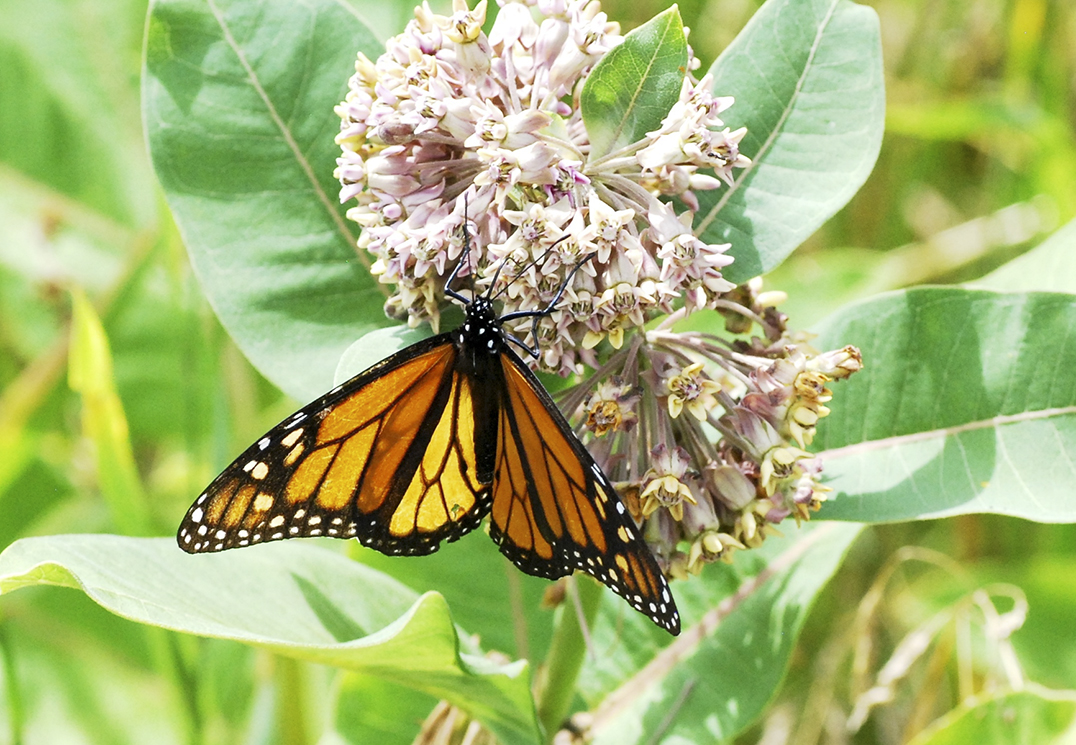EDITOR’S NOTE: Part I of this two-part series on biodiversity will discuss the importance of biodiversity. Part II will look at biodiversity on Manitoulin Island.
by Joe D. Shorthouse
MANITOULIN—Many of the citizens of Manitoulin Island, like those in other parts of Canada, are curious about the purpose and effectiveness of the United Nations’ COP15 conference held in Montreal, December 7 to 19, 2022. With 17,000 delegates from 196 countries, along with 900 reporters, their objective was to forge a global agreement to conserve, protect, restore and make sure there is enough biodiversity to sustain life on our planet.
This sounds like a noble objective, but some might ask: ‘What has it got to do with Manitoulin Island?’ According to ecologists, what’s at stake is the ability of all ecosystems, including those on Manitoulin, to sustain themselves.
Manitoulin is a significant contributor to ecosystem services and what happens here not only impacts residents on this Island, but as well, those who live elsewhere. If the warnings of ecologists are correct, life on Manitoulin will be negatively impacted, like the rest of Canada, and we will all suffer unless the trend towards the continuing loss of living species is stopped.
It was just a few years ago that a panel of concerned scientists warned that studies showed a world-wide loss of biodiversity is declining at an unprecedented rate. Biodiversity is the term coined by entomologist E. O. Wilson to encompass the variety of genes, species and ecosystems on Earth. The panel of scientists reminded us that biodiversity is the web of life that connects us all.
Biodiversity puts fruit, cereals (wheat, oats), vegetables (potatoes, beans) and the tissues of animals (eggs, beef, fish, deer, chicken) on our dinner plates. It puts fresh water in our taps. Wetlands purify our water and trees trap carbon and impede climate change and provide the air we breathe. Remove any of these and human life as we know it will disappear.
Researchers have shown that each of the component species in a habitat play a functional role in sustaining ecosystems. Obviously, some species are more important than others, but the point is that ecosystems function best when all the players are present and active. All life forms are players.
To grasp the importance of biodiversity, imagine looking out the window of an airplane on a tarmac and watching someone sitting on the wing removing rivets with a pair of pliers. Removing a few will not be a serious problem but there comes a point when removing one last rivet causes the wing to fall off. We do not know how many species (rivets) can be removed from Manitoulin Island before ecosystems collapse, but we must not let this happen.
Conservation researchers have shown that almost one million species, ranging in size from large mammals to the smallest flowering plants around the world are at risk of extinction in the next decade. As people continue to log forests for lumber and agriculture, drain wetlands for new housing developments, pollute with sewage and industrial waste, overfish the oceans and pump greenhouse gas emissions into the atmosphere, more and more species and ecosystems will be driven to the brink of collapse.
The need to preserve biodiversity received much global attention in December at the COP15 conference. COP stands for meeting of the Conference of the Parties and it was the 15th meeting of the United Nations Convention on Biological Diversity.
Originally scheduled to take place in China, it was delayed two years by the pandemic. China retained the presidency of the conference, but the location was changed to Montreal, where the secretariat of the convention is based, with Canada acting as host country.
Delegates reached an historic agreement on the last day of the conference to boost prospects for the long-term survival of the natural world and all who depend upon it. The agreement guides conservation efforts through the end of the decade with the aim of seeing species and ecosystems recovering in all regions of the globe by mid-century.
The plan includes concrete measures to halt and reverse nature loss, including putting 30 percent of the planet and 30 percent of degraded ecosystems under protection by 2030. It also contains proposals to increase financing to developing countries—a major sticking point during talks.
Well over 30 percent of Manitoulin’s land mass is natural and most of its biodiversity is currently protected. Thus, Manitoulin is contributing to Canada’s goal; however, we must be cautious that future developments do not occur that would upset the ecological balance.
There are already signs that ecosystem changes are occurring on Manitoulin. Recall that we seldom clean splattered insects off our windshields every time we gas up, as we did 30 years ago. This is a sign that there are fewer insects. There are fewer bats, frogs, whippoorwills, nighthawks, and purple martins, all of which eat insects. No one understands why they are disappearing from Manitoulin, but overuse of pesticides elsewhere, pollutants carried in the air, and climate change are suspected causes.
Fireflies are less common as are adult mayflies emerging from Lake Huron. Sport fish such as rainbow trout were elusive around the shores of Manitoulin in the summer of 2022. Monarch butterflies are in decline. Milkweed is pollinated by insects, so if insect pollinators are in decline, milkweed will become scarce and monarch butterflies will disappear. Are these the rivets on an airplane wing?
There have been many studies showing that we tend to concentrate on mammals and birds when thinking about biodiversity in local ecosystems. For example, when shown a photograph of deer in a forest or meadow, the common response is to identify with the deer and pay no attention to the plants.
This inability to see or notice plants in one’s environment and the inability to recognize their importance in sustaining ecosystems and in human affairs, is known as ‘plant blindness.’ Another term, which means the same thing, but sounds less derogatory to people with disabilities, is ‘plant awareness disparity’ (PAD).
Plant blindness or PAD includes the inability to appreciate the aesthetic and unique biological features of plants and the misguided anthropocentric ranking of plants as inferior to animals and thus, as unworthy of consideration. These views lead to less consideration of plants when discussing conservation and loss of biodiversity.
Without plants, there would be no animals, but most plants would survive nicely without animals. Plants are primary mediators between the physical and biological world and yet they are least understood, and most taken-for-granted of all living things, and this trend applies to Manitoulin Island.
While animals usually steal the spotlight where extinction is discussed, one in eight plant species worldwide is currently threatened by extinction. Intellectually, we know that you don’t get deer without shrubs, or monarch butterflies without milkweed, but culturally this is often forgotten. Our knowledge about the world around us is incomplete if we do not include plants in our discoveries, and it is distorted if we do not place sufficient emphasis on plant life.
Animals in contrast get most of the attention because they are commonly seen as superior to plants because of their capacity for feeling, thought and pain, and to eat. Having eyes and faces, communicating with sound, observable life cycles, giving birth and raising young, implies they are superior to plants, but they are not.
However, Indigenous peoples tend to have much more appreciation for plants, as explained in the book ‘Braiding Sweetgrass,’ by Robin Wall Kimmerer. Drawing on her life as an Indigenous scientist, botanist and a female, Ms. Kimmerer describes how plants offer us gifts and lessons, even if we’ve forgotten how to hear their voices. She argues that the awakening of ecological consciousness requires the acknowledgment and celebration of our reciprocal relationship with plants and the rest of the living world.
That may change for the rest of society as there is increasing scientific evidence of ‘human-like’ traits of trees and shrubs, including being alive, having intentional motion, food uptake, sexual activity, and even chemical communication with neighbours warning the presence of damaging herbivores.
This will not come as a surprise to many Indigenous cultures such as those on Manitoulin who have not fallen so wholly into the western way of looking at plants and instead have a spiritual connection that sees them as important sources of food, fibre, and medicine, and for generations since ancient times, have learned to cultivate a sense of their extraordinary beauty.
Joe Shorthouse is a retired professor of entomology and environmental biology and summer resident of Manitoulin Island. He is also on the Steering Committee of the Great Lakes Islands Alliance.




